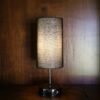How Office Lighting Impacts Productivity and Mood
In today’s fast-paced work environment, business owners are constantly seeking ways to improve employee performance and well-being.
You might consider team building or better benefits, but have you ever thought that lighting could be the silent productivity killer—or booster?
Scientific research shows that proper office lighting can enhance focus, reduce fatigue, and even lift moods. Let’s explore how lighting influences both efficiency and emotional well-being in the workplace.
1. Natural Light: The Best Source of Illumination
If your office has large windows, you’re already ahead.
Natural light is proven to boost mood, productivity, and even sleep quality.
-
Open the blinds during the day to let in sunlight.
-
Position desks close to windows if possible.
-
Use daylight-mimicking LED lights (around 5000K) in windowless areas.
2. Choose the Right Color Temperature
Color temperature affects how we feel and focus.
Overly warm light (below 3000K) may make employees feel sleepy, while overly cool light (above 6000K) can feel harsh and sterile.
The ideal range for office lighting is 4000K to 5000K—a neutral white that helps keep people alert and productive without eye strain.
3. Reduce Glare and Shadows
Harsh lighting can cause glare and sharp shadows, which lead to eye fatigue and headaches.
To improve comfort:
-
Use diffused lighting fixtures, such as LED panels with light guides.
-
Avoid placing lights where they reflect off screens or glossy surfaces.
-
Add soft task lighting on desks for better focus and control.
4. Add Task Lighting for Better Precision
Task lighting is essential for areas where detailed work is performed.
It provides concentrated light and reduces mistakes.
Good choices include:
-
Adjustable LED desk lamps.
-
Focused pendant lights above meeting tables.
-
Soft wall sconces in client areas to create a welcoming feel.
5. Embrace Smart Lighting Systems
Smart lighting allows employees to adjust brightness and color temperature based on tasks and time of day.
Examples:
-
Morning (9am): Cool white light for concentration.
-
Afternoon (2pm): Slightly warmer tones to ease fatigue.
-
Evening (6pm): Dim lighting to signal the end of the workday.
Motion sensors can also automate lighting and save energy.
6. Lighting Affects Mood and Biological Rhythms
Lighting doesn’t just affect what you see—it affects how you feel.
It influences your circadian rhythm, which controls sleep-wake cycles and hormone production.
Poor lighting can lead to poor focus, irritability, and even seasonal affective disorder.
Balanced lighting helps employees stay awake during the day and rest better at night, improving overall health and performance.
Conclusion:
Lighting is not just a technical detail—it’s a core element of workplace design.
Investing in better office lighting can yield measurable results: sharper focus, happier employees, and a more energized environment.
So next time you think about workplace improvement, look up—your lights might be the answer.


